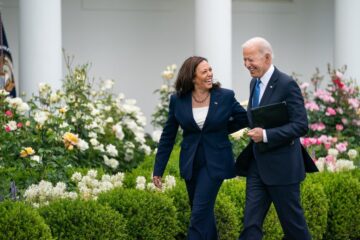Welcome back to Week 49 in my weekly reports analyzing the Covid-19 pandemic and its effects on the country and higher education in the new Biden-Harris administration. For those of you reading this on my blog, Off the Silk Road, I have also launched a newsletter, where these reports can be sent directly to your email each week. Click here to subscribe.
Last week, we discussed President Biden’s new goal for all adults to be eligible for a vaccine by May 1 as we enter into a new phase of the pandemic response. This week, we will focus on the race between vaccines and variants as the administration accomplishes its goal of 100 million shots in just 58 days.
A national look
We begin today’s discussion by condemning the tragic deaths at two Atlanta spas earlier this week. We stand in solidarity with our Asian-American friends as we recognize that words and rhetoric matter. Hate has no place here and we cannot be complicit. And it’s called the coronavirus, not anything else.
For weeks, experts have warned about variants as the last hurdle of the pandemic, pointing to examples in European countries with spikes in cases. In some places in the U.S., it appears that the variants are starting to gain an edge, with national cases not declining as rapidly as in previous weeks. This week, the CDC added two new variants to its list of Variants of Concern: B.1.427 and B.1.429, both discovered in California. In addition to these variants, we are starting to see the effects of B.1.1.7 spread in Michigan and B.1.526 in the New York area, as seen from this national map.
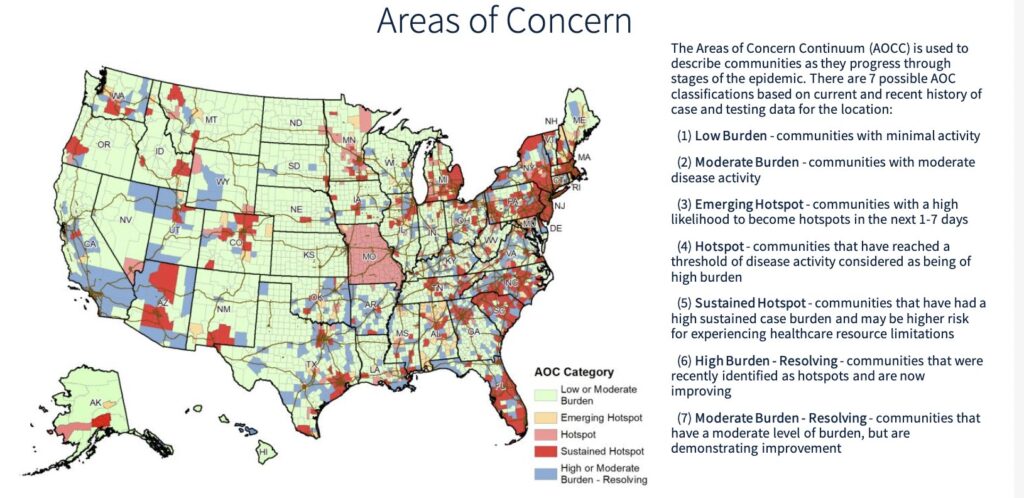
The more concerning element of the B.1.1.7 spread in Michigan is that much of the vulnerable population has still yet to be vaccinated. Michigan has the highest number of confirmed B.1.1.7 cases per capita in the country, and estimates show that this variant is now 60% of all cases in the state (higher than Florida). The increase in cases may be attributed to not only pandemic fatigue, but also policy that opened indoor dining to 25% (February 1) and 50% capacity (March 5).
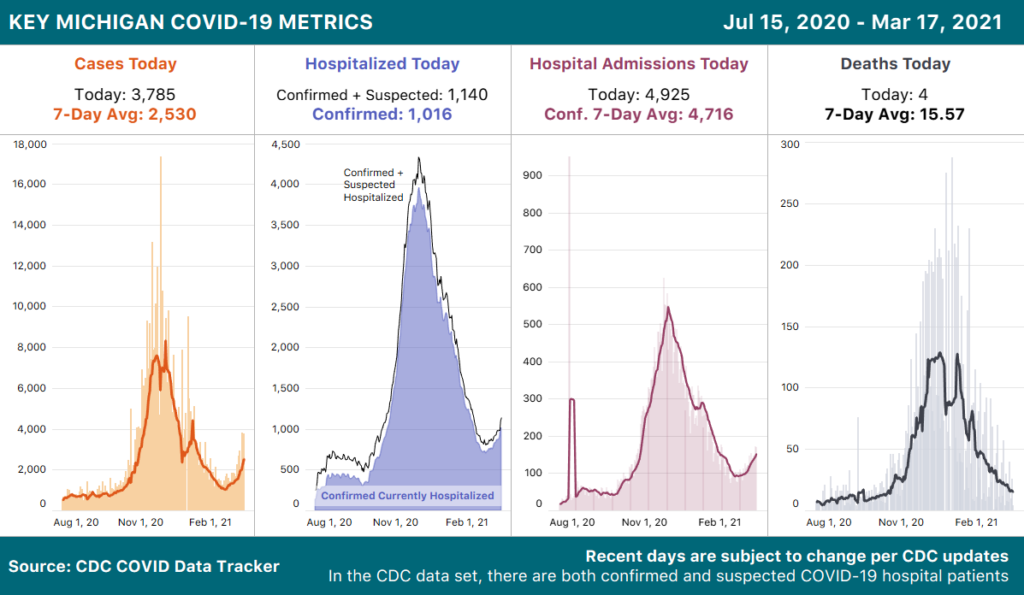
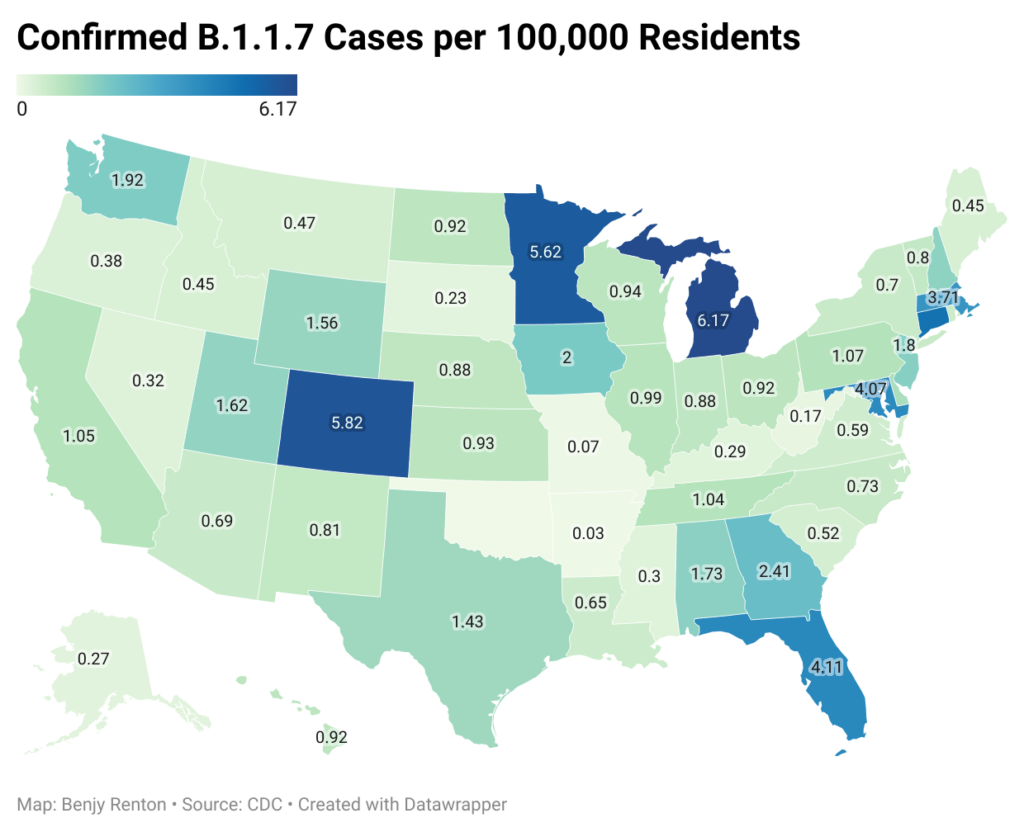
We knew the variants were going to spread. The issue is Michigan’s pace of vaccinations is much lower than any other states, and the variant will continue to spread in Detroit and move to more rural areas. When it comes to vaccinations, Michigan ranks 37th in doses administered per capita. More accelerated vaccination will be needed to stay ahead of increasing cases and hospitalizations, which could lead to surges in parts of the country in the coming month. It is likely that the only reason the U.S. is not seeing the surges similar to those in Europe is due to our aggressive vaccination pace.
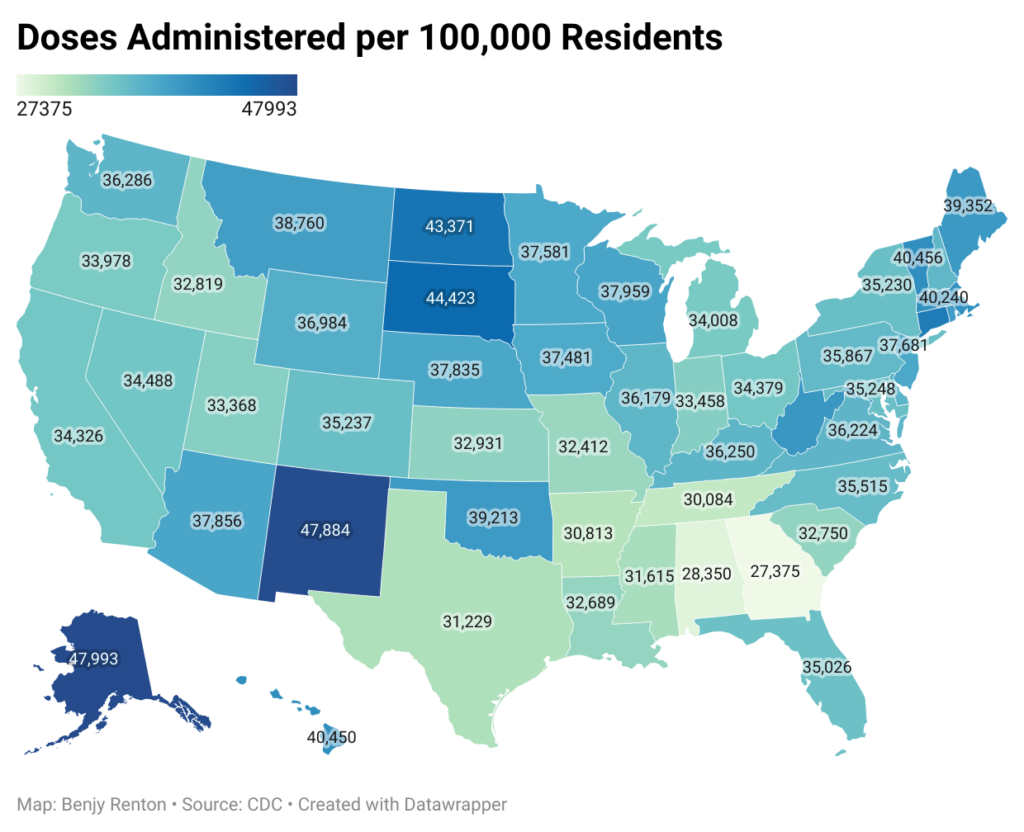
Equally as contagious as a variant is the spread of misinformation. This week, as he does many weeks, Fox News host Tucker Carlson continued to cast doubt on the vaccines to his millions of viewers. Especially given that Republicans are seen as the most unlikely to be willing to take the vaccine, according to a CBS/YouGov poll, it is easy to see where these people get their information from, and may fall ill, or worse, because of it.
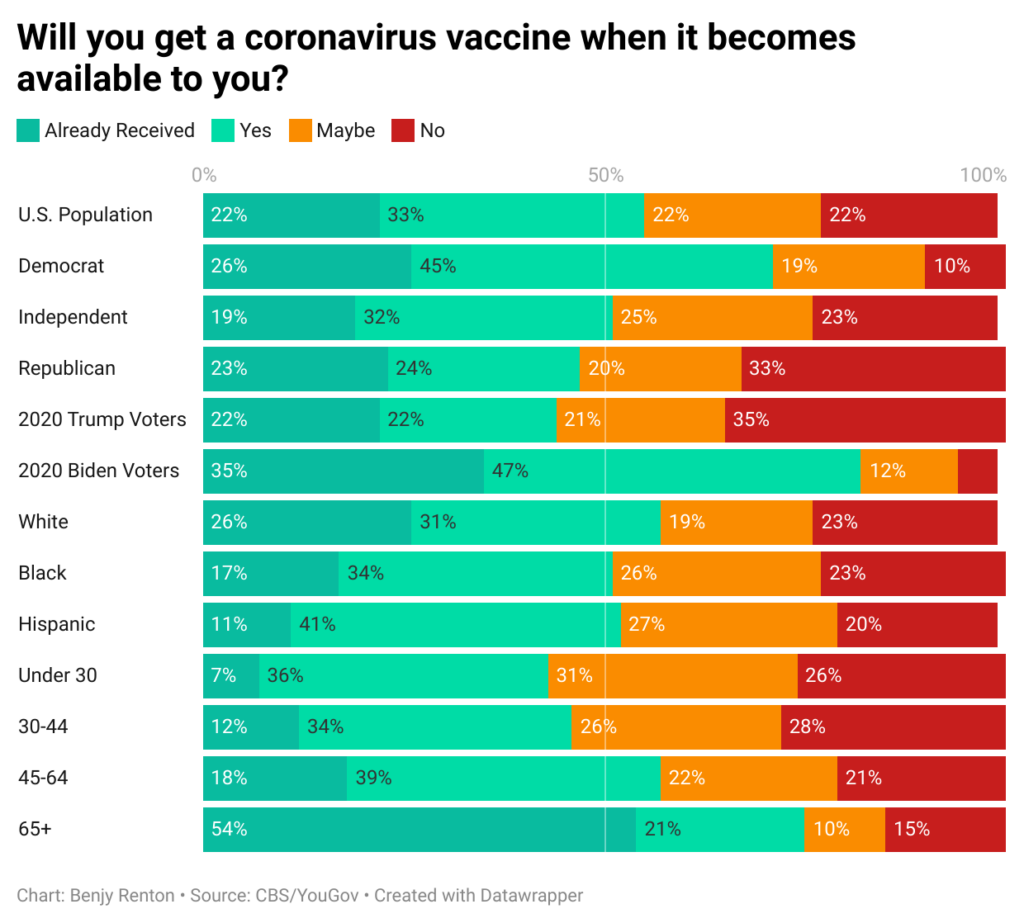
This week, President Biden and his administration continued to take aggressive action and enacted targeted policies to vaccinate more Americans. In addition to visiting the CDC on Friday and proclaiming that “Science is back,” he unveiled a $10 billion school testing plan, increased the Medicare reimbursement for giving the Covid-19 shot to $40 from $23 (to further incentivize providers to deliver it), lent vaccines to Canada and Mexico and has plans for a public education campaign to encourage vaccine uptake. However, this week’s most impressive milestone was hit on Friday, marking 100 million shots in arms since January 20. This is 42 days ahead of schedule. On Friday morning, President Biden said his administration is on pace to administer 200 million Covid-19 vaccines by his 100th day in office. To accomplish this goal, the average daily vaccinations would have to remain at 2.5 million/day, which is certainly possible.
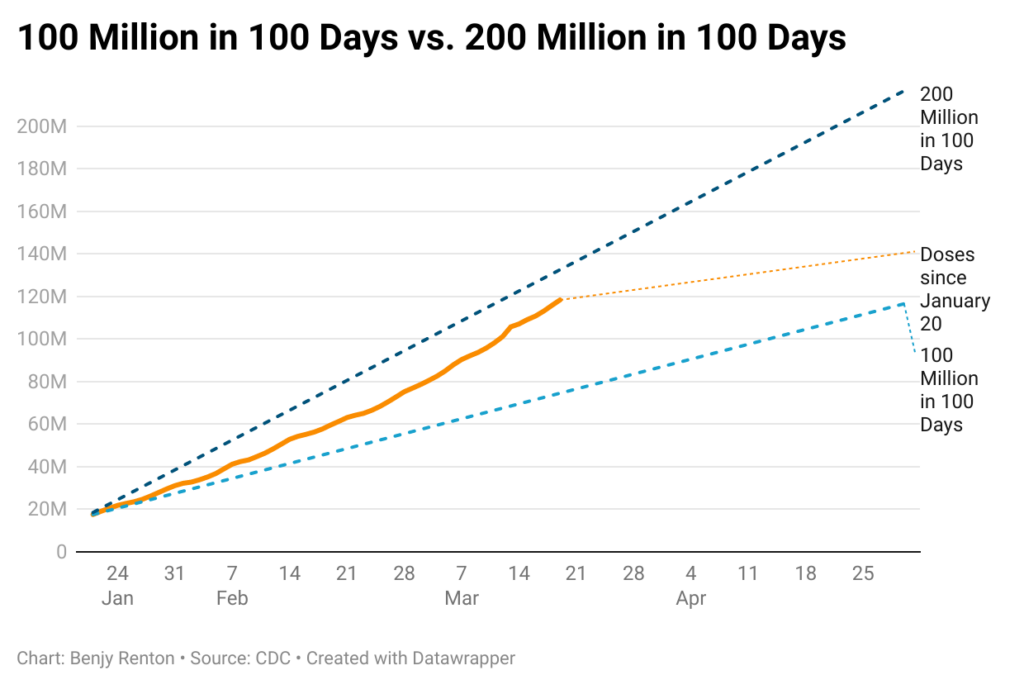
Let’s take a look at some of the latest scientific developments:
- According to a paper published in Nature, B.1.1.7, the UK coronavirus variant identified in late 2020, is associated with 55% higher Covid-19 mortality than other lineages.
- Most people who have had the original Covid-19 strain are protected from catching it again for at least 6 months, according to a large-scale study from Denmark published in The Lancet. Prior infection with the coronavirus reduced the chances of a second bout by about 80% in people under 65, but only by about half in those older than 65.
- According to a study from New Zealand, transmission occurred in government-managed hotel quarantine within a 50-second window of the doors open between two rooms.
- In the first week of March, more than 20% of blood donations from unvaccinated people had Covid-19 antibodies, according to data shared with CNN by the American Red Cross.
- The CDC identified several controversial pandemic recommendations released during the previous administration that they say were “not primarily authored” by staff and don’t reflect the best scientific evidence, based on a review ordered by its new director.
- Spectators from overseas will not be allowed to attend the Summer Olympics in Japan, organizers said on Saturday.
- The former president’s Mar-a-Lago Club has been partially closed due to a Covid-19 outbreak among staff.
- New Harris polling done for the American Psychological Association shows 42% of Americans have gained a stunning 29 pounds on average during the pandemic while 18% have unintentionally lost weight for an average loss of an equally surprising 26 pounds.
- Two reports released this week have found the first evidence that dogs and cats can become infected by the B.1.1.7 variant.
- Along with publishing three studies (here, here and here) emphasizing low transmission in schools (provided precautions such as masking, ventilation and cohorting are followed), the CDC reduced the minimum distance in schools from 6 feet to 3 feet.
- The CDC published a study on SARS-CoV-2 transmission at a private high school in New Jersey. Regular testing of students was part of a comprehensive strategy, including universal masking. Of 19 cases among faculty and staff members and eight among students, two (7%) were considered to represent on-campus transmission.
- According to the first published long-term seroprevalence study from Wuhan, 6.9% of the population had antibodies against Covid-19 by April 2020—with 82% of cases asymptomatic. 40% developed neutralising antibodies lasting at least 9 months.
- A preprint on MedRxiv shows that the vaccine is safe in those with Long Covid symptoms. In fact, a small overall improvement in Long Covid symptoms, with a decrease in worsening symptoms (5.6% vaccinated vs. 14.2% unvaccinated) and increase in symptom resolution (23.2% vaccinated vs. 15.4% unvaccinated) was reported.
- According to a preprint, the B.1.351 and P.1 variants infect and replicate in mice without the need for human ACE2 receptors. These mutations are not only enhancing transmission and antibody evasion but they are also expanding host range, underscoring the importance for widespread vaccination.
Yesterday, the U.S. recorded over 3.1 million doses administered, the second-highest daily total to date. In the coming weeks, over 25 states have announced plans to open eligibility to the vaccine to the general population, beginning with Mississippi this past week.
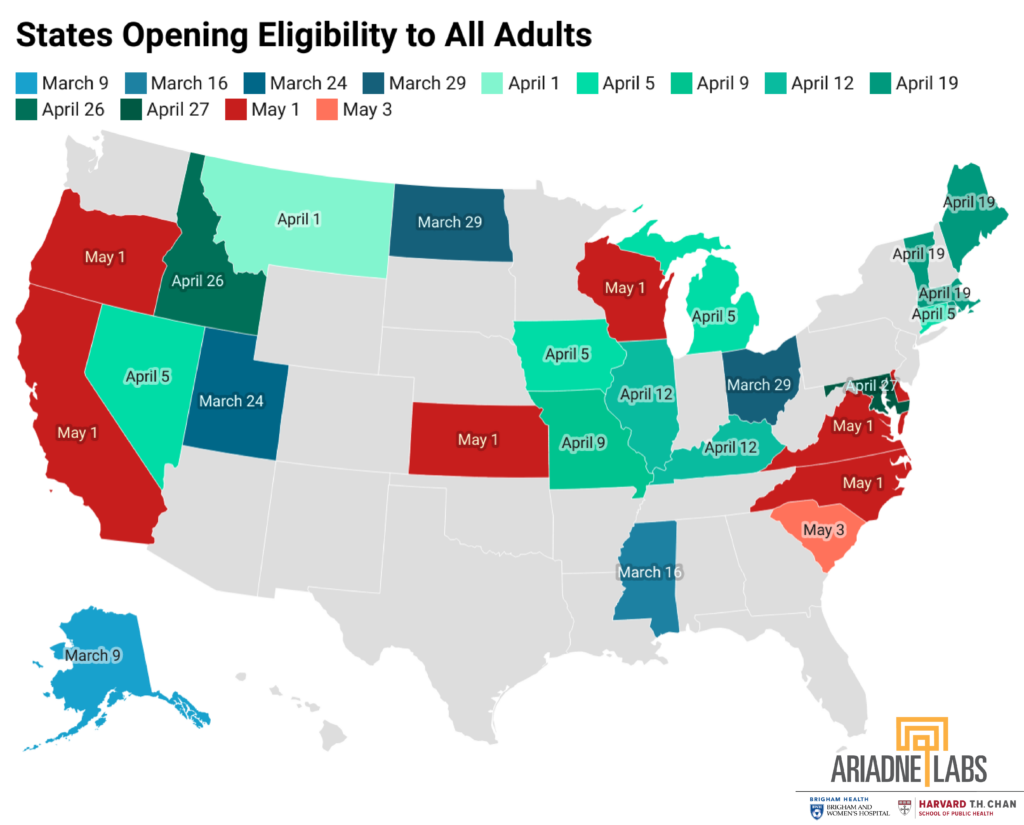
As vaccine supply ramps up, the landscape will shift from vaccine scarcity to vaccine hesitancy. Last Sunday, Republican pollster Frank Luntz hosted a focus group with politicians, former CDC Director Dr. Tom Frieden and Trump voters from all around the country. Here are some key takeaways:
- Long-term side effects are a big concern in the eyes of people
- People don’t want politics; they want medicine/doctors
- Vaccinations should be seen as a ticket to a normal life/economy
- Skeptics must be led with empathy
Additionally, the introduction of the Johnson & Johnson vaccine means that for many of those less willing to get the vaccine, they only have to come for one dose. In the first few weeks, barring any data lags, we have seen uneven rollout of this vaccine across states, with some states using their Johnson & Johnson supply more quickly than others.
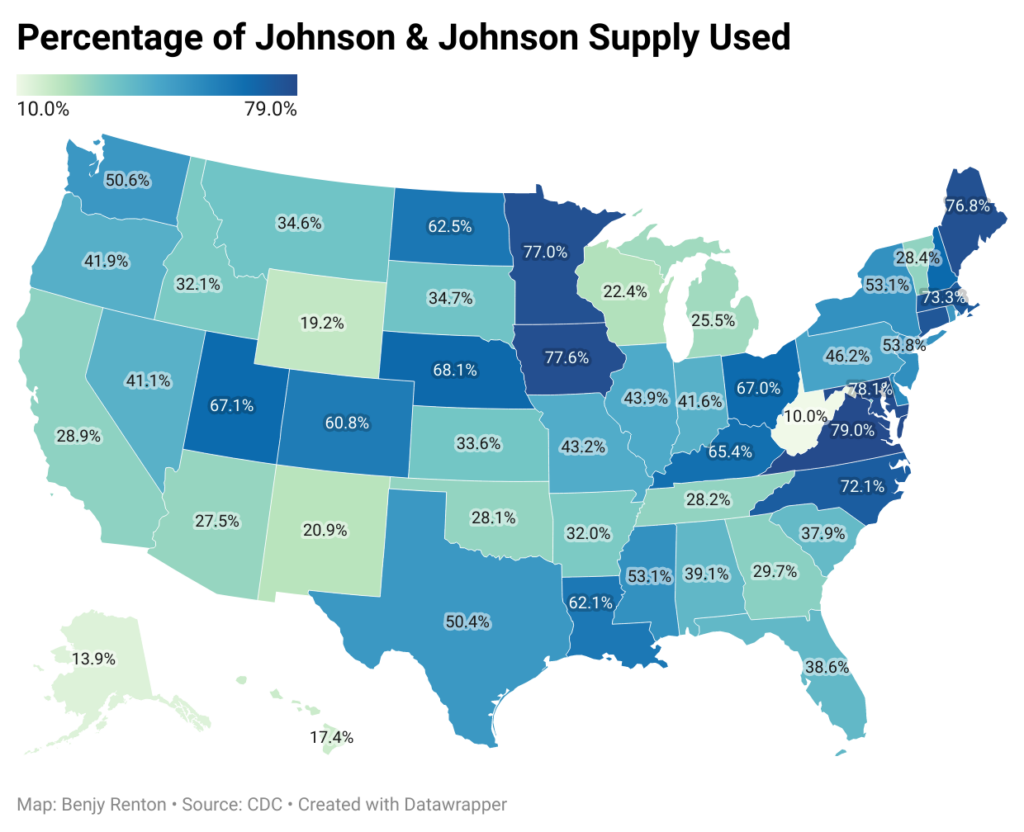
A few other updates on vaccines:
- According to a new CDC report, the vast majority (88%) of people who were vaccinated received both doses of the Pfizer or Moderna vaccine. Just 3% missed their second dose. Among 2-dose recipients, 95.6% received their 2nd dose within 4 days of 21 (Pfizer) or 28 (Moderna) days after 1st dose. However, this high percentage may be because the first vaccine recipients were healthcare workers and nursing home residents, who may be more likely to remember to go back for a second dose.
- European countries suspended use of the AstraZeneca vaccine earlier this week after concerns of blood clots emerged. The World Health Organization stated that the benefits of the AstraZeneca vaccine outweigh its risks and recommends that vaccinations continue.
- Moderna announced Monday that it has begun testing on a potentially refrigerator-stable version of its coronavirus vaccine.
- According to real-world data from Israel published in a preprint, the Pfizer vaccine’s effectiveness reached 91.2% for all infections and 99.3% for symptomatic infections. Effectiveness was uniform for men and women yet declined mildly but significantly with age and for patients with specific chronic comorbidities, most notably type 2 diabetes.
- A leader in vaccinations throughout the rollout, West Virginia has now been taking the Johnson & Johnson vaccine to meet people where they are at — bus stops, homeless shelters and soup kitchens.
- There is mounting evidence demonstrating that a single dose of an mRNA vaccine does not elicit enough of an immune response in those with immunocompromised states, in this case, organ transplant recipients. This underscores the importance of vaccinating people in the community — to protect those who may not be able to be fully protected.
- According to a CDC report, in the first 2.5 months of the U.S. vaccination program, high social vulnerability counties had lower Covid-19 vaccination coverage than did low social vulnerability counties. Although vaccination coverage estimates by county-level social vulnerability varied widely among states, disparities in vaccination coverage were observed in the majority of states.
- Some of the younger population unwilling to take the vaccine say they have already had Covid-19/feel they would not be affected if they were infected. But just look at the difference in antibodies between recovered and vaccinated individuals, according to a study published in JAMA.
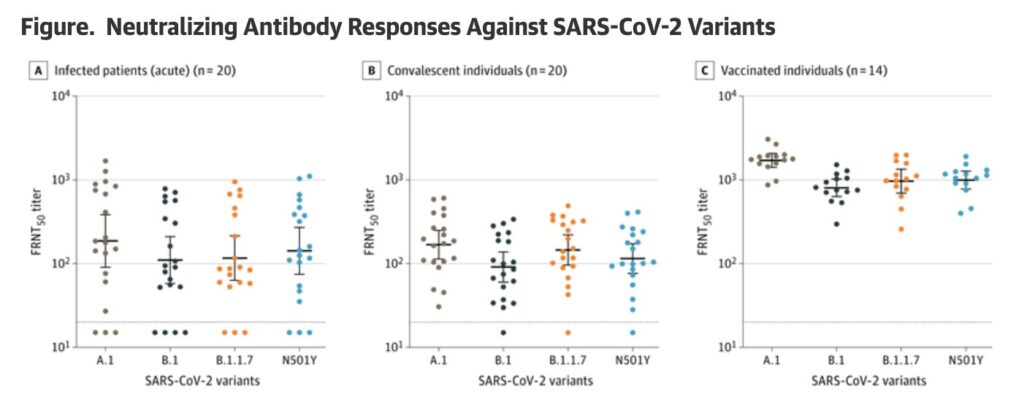
- Peer reviewed data published in The New England Journal of Medicine found that the AstraZeneca vaccine does not work against the B.1.351 variant, first discovered in South Africa.
- Missouri governor Mike Parson has projected that 40% of his state’s residents will not be interested in receiving the vaccine.
- According to an article published in The New England Journal of Medicine, the Moderna vaccine shows reduced activity against South Africa B.1.351, Brazil (P.1), and California (B.1.427/B.1.429) coronavirus variants. However, it remains highly active against the B.1.1.7 (UK) variant.
- Health authorities in the United Arab Emirates have begun administering a third dose of the Sinopharm coronavirus vaccine to at least some residents, as doctors say the Chinese-made shots in some cases haven’t generated enough protective antibodies.
- News organizations are at risk of “creating false connections and misinformation” when they write headlines that suggest a link between vaccinations and deaths or other health problems where one does not necessarily exist, according to a new study published by the non-partisan non-profit organization Advance Democracy and reported in CNN.
- A retrospective cohort analysis in two Connecticut skilled nursing facilities found partial vaccination with the Pfizer-BioNTech Covid-19 vaccine (from >14 days after dose 1 through 7 days after dose 2) to be 63% effective against SARS-CoV-2 infection.
- In a piece in The New Yorker, Sue Halpern described the challenges of vaccine manufacturing and how each vial is produced.
- According to a Washington Post-Kaiser Family Foundation poll, slightly over half of front-line health-care workers (52%) said they had received at least their first vaccine dose at the time they were surveyed. More than 1 in 3 said they were not confident vaccines were sufficiently tested for safety and effectiveness. Fostering trust with medical professionals will be critical for widespread rollout.
Let’s move on to our discussion of higher education.
Higher education
This week’s higher education discussion continues to revolve around two issues: spring break and vaccines. Yesterday, Miami Beach declared a state of emergency and imposed a curfew as spring break crowds sparked safety concerns. It is worth noting that the highest numbers of confirmed variant cases are in states such as Florida, Texas and Georgia — popular spring break destinations. Colleges should consider menacing measures such as increased testing of students returning from break to avoid spreading variants within colleges, which are largely unvaccinated populations. Additionally, we may see a spike in cases after St. Patrick’s Day.
In addition to a rise in cases at Cornell and Yale, this week’s concerning outbreak was at Duke University. The latest case numbers, released on Tuesday, show skyrocketing case counts — 218 students tested positive in the last week (evenly split between asymptomatic and symptomatic/contact testing) and 371 students were in quarantine. As I pointed out in a Twitter thread earlier this week, much of this outbreak was fueled through Greek life gatherings.
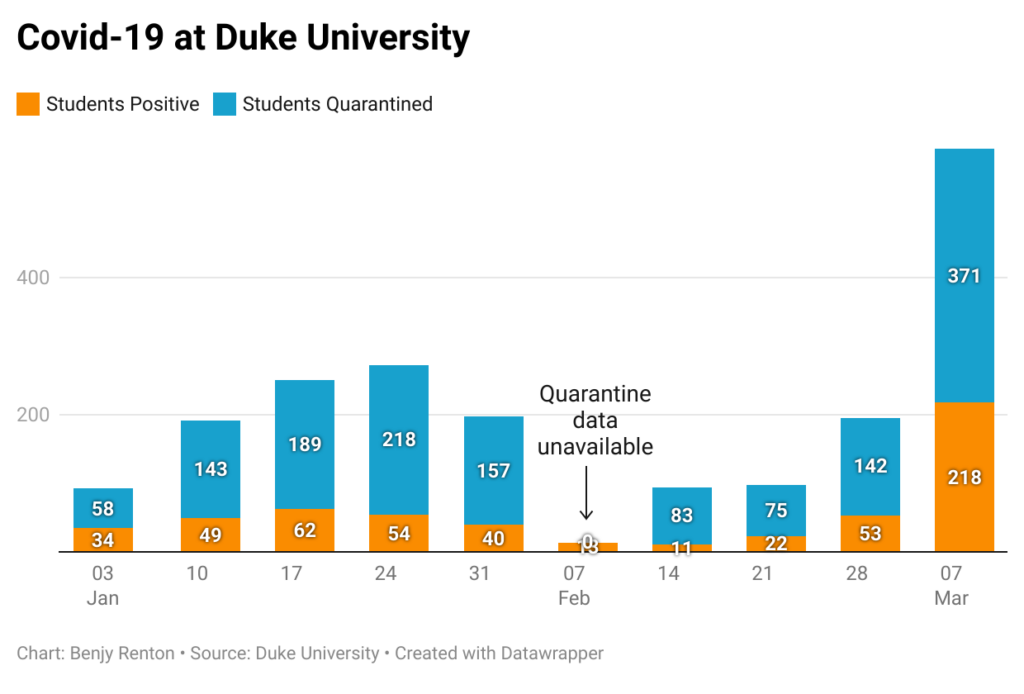
Here is a roundup of this week’s higher ed news:
- Some colleges have turned their sports arenas into mass vaccination sites.
- 500 UNC students will be enrolled this summer in a Moderna vaccine trial to test if the vaccine reduces transmission. They will be tested frequently.
- Colleges have already begun mapping out a more normal fall, but they warn plans could change.
- Mark Emmert, the NCAA’s president, acknowledged a difference in the testing protocols between the men’s and women’s basketball tournaments: the men were being tested by a PCR test, while the women were being tested with the cheaper antigen test.
- While not the most likely group for vaccine hesitancy (as many recognized the impacts of Covid-19 on their college careers), some work will be needed to increase vaccine uptake in college students. One student at the University of Mississippi said that she does not plan to get vaccinated because she has already had Covid-19 twice.
- With UCLA planning for a return to in-person instruction beginning in the fall, there are questions surrounding the validity of foreign vaccines that international students may receive prior to returning to campus. Many colleges will have to wrestle with this issue.
- In a survey of 7,500 Michigan State undergraduates in fall 2020, about half reported spending more time than in previous semesters on papers, class material, lectures, and course assignments.
- Concerns arose at the University of Alabama after many students were sheltered from tornadoes earlier this week by packing into a room, many without masks.
- “They’ve focused on enforcing its Covid campus safety policy, without offering students channels to thrive socially while abiding by restrictions,” one Brown University student writes. “So, why not get creative?”
- The Michigan Daily published an impressive summary of their coronavirus coverage after one year.
- In a piece in Vox, three college students shared their perspectives on why normal spring breaks were necessary for their mental health.
- College students have been involved in all aspects of the vaccine rollout. At Brown University, students received Covid-19 vaccines after volunteering at clinics. At the University of Kentucky, nursing students are the ones giving vaccinations to local community members.
- USA Today’s Elinor Aspegren interviewed student editors across the country on their schools’ coronavirus coverage over the past year.
The Good Stuff
Let’s roll the clips of the good stuff. In my usual tradition, I feature my favorite stories from the week. Here are my Top 10.
- CNN’s Kerry Flynn reported on two news outlets which have stood out on their pandemic coverage: The Atlantic and STAT. With explanatory articles and pieces on predicting the pandemic’s effects on Americans, these organizations have kept us informed and educated.
- Backstage music crews, also known as roadies, were set adrift by the pandemic. For some, a weekly Zoom group has been the answer.
- Public health schools saw a 23% jump in applicants for master’s and doctoral programs from fall 2019 to fall 2020, and are reporting an even bigger increase so far in this application cycle.
- Some Covid-19 survivors have had political awakenings, being inspired from diagnoses or having lost loved ones to help change federal policy.
- A top Taiwanese official issued a plea on Thursday for people to stop changing their names to “salmon” after dozens made the unusual move to take advantage of a restaurant promotion. Any customer whose ID card contained “Gui Yu” – the Chinese characters for salmon – would be entitled to an all-you-can-eat sushi meal along with five friends.
- A couple first met at Fenway Park 54 years ago. Last week, they were vaccinated there.
- Following a surge in online shopping due to Covid-19, Phoenix’s recycling plants saw around a 31% increase in cardboard from 2019 to 2020.
- A Vermont car stuck in Montreal was reunited with its owner one year later.
- The Connecticut Post published a glossary of Covid-19 terms we have all learned over the past year.
- Vax’n 8, a group of seven doctors from Vacaville CA, performed a rendition of “My Shot” from Lin-Manuel Miranda’s “Hamilton” to convince others to take the Covid-19 vaccine.
Conclusion
This spring, we face one final race: vaccines versus variants. With many adults only weeks away from being eligible for vaccines, every death in the coming weeks would have most likely been someone who would have been vaccinated just weeks later. Variants are spreading in parts of the country and it is possible we will face another surge. With much of the most vulnerable already vaccinated, it may be that younger individuals, including college spring breakers, will be driving much of this transmission. We must do all we can to prevent this scenario from happening.
I’d like to thank all the student journalists with whom I have the pleasure of working. In the next weeks and months ahead, they will become vital in chronicling their colleges’ paths forward for the spring and beyond. Support their work by reading it.
My best to all for good health.
Like what you see? Don’t like what you see? Want to see more of something? Want to see less of something? Let me know in the comments. And don’t forget to subscribe to the weekly newsletter!
For more instant updates, follow me on Twitter @bhrenton.

